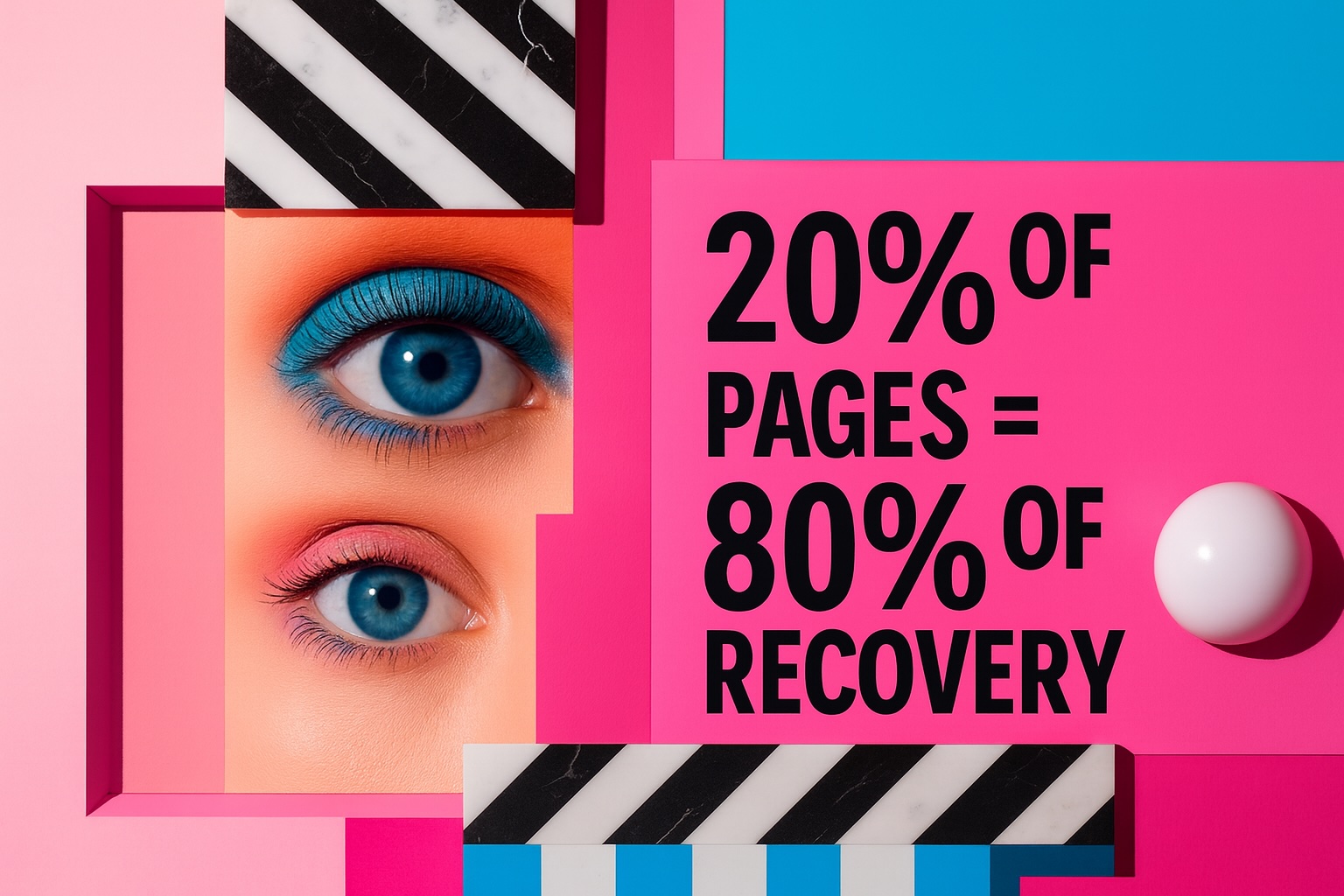The "Helpful Content" Update: How to Write Content Google Actually Likes
Turns out Google's idea of "helpful" isn't your mum telling you to wear a jumper. It's actually about creating content that doesn't make people want to hurl their phones across the room. Revolutionary, really.
SEO Therapy Session: How to Survive Google's Helpful Content Update Without Losing Your Mind
Let's be honest, shall we? Google's algorithms have more mood swings than a hormonal teenager deciding what to wear to prom. Just when you think you've got it sorted—you're creating "quality content" (whatever that means this week)—Google announces another update that leaves you questioning your entire digital existence. The Helpful Content Update is just the latest in Google's long tradition of making marketers collectively spit out their coffee and whisper, "What fresh hell is this?"
What's This "Helpful Content" Nonsense, Anyway?
In typical Google fashion, they've invented another delightfully vague term that essentially means "stop writing rubbish just to rank." Revolutionary concept, isn't it? Having weathered my fair share of algorithm changes (and watched my own business rankings rollercoaster accordingly), I've come to understand that the Helpful Content Update boils down to one thing: Google is trying to reward content that actual humans find useful. Shocking.
The update targets content that appears to be created primarily for search engines rather than humans. (And yes, we've all written that kind of content, usually at 11pm with a deadline looming and metrics to hit.) Google's now looking for signals that your content offers a "satisfying experience" and demonstrates "first-hand expertise."
Translation: Those 500-word SEO-stuffed monstrosities written by someone who couldn't tell the difference between your product and a potato? They're on the chopping block.
Signs You're Writing Content Google Might Hate
Before we get to the good stuff, let's have a moment of brutal self-reflection. Your content might be in Google's crosshairs if:
- You're churning out articles on topics you know nothing about because your "keyword research tool told you to."
- Your content reads like it was written by a committee of robots trying to impersonate humans.
- You're answering questions no actual person has ever asked.
- You've somehow stretched "How to tie shoelaces" into a 2,000-word guide complete with the history of shoelaces and 15 affiliate links to premium laces.
- Your article promises the world in the title but delivers a deflated beach ball in the content.
I've been guilty of at least three of these. And the algorithm changes hurt. It's like being dumped via text message after you've just bought concert tickets for your anniversary. Not that I'm bitter about either experience.
How to Write Content That Google Actually Fancies
Having dragged myself through the trenches of multiple algorithm changes (while simultaneously watching my candle business go up in flames, but that's another story), I've learned that surviving Google's whims requires adaptability and a return to some fundamental principles that, frankly, we should have been following all along.
Here's the not-so-secret formula to creating content that stands a fighting chance against Google's algorithmic mood swings:
1. Actually Know What You're Talking About
Revolutionary concept, I know. Google has this wild idea that content should be written by people who understand the subject. After burning through my savings trying to compete with content farms during my business days, I've learned that genuine expertise is the one thing competitors can't easily replicate.
If you're writing about financial planning but your most sophisticated financial manoeuvre was accidentally ordering the expensive wine, maybe reconsider your content strategy. Google's increasingly good at detecting whether you're speaking from experience or just regurgitating what you read on three other websites.
2. Solve Actual Human Problems
Content should answer questions people are genuinely asking, not questions you think might get you traffic. I spent months creating content nobody wanted because it seemed "strategic" rather than useful. What a colossal waste of time that was.
Before writing anything, ask yourself: "Would I personally find this helpful if I were in my audience's shoes?" If the answer involves looking at your shoes and mumbling excuses, it's time to rethink your approach. This is exactly the foundation of a problem-first content strategy that actually builds audiences by addressing real pain points.
3. Be Thorough Without Being Excessive
There's a fine line between comprehensive and "dear god, will this article ever end?" Your content should cover a topic fully without padding it out like a university essay written at 3am with a 2,000-word minimum.
I've found that my best-performing content after algorithm updates has been the stuff that gets to the point, covers all the necessary angles, and then politely excuses itself without overstaying its welcome. This aligns with what we know about user behaviour: 67% of customers prefer to use self-service options instead of speaking with a company representative. People want solutions, not essays.

4. Write Like a Human, Not a Keyword Repository
We've all been there – jamming "best affordable luxury candles for millennials in London" into a sentence that reads like it was constructed by someone having a stroke. Stop it. Google's semantic understanding means it knows when you're keyword-stuffing like an overzealous taxidermist.
Write naturally, use related terms, and trust that Google's smart enough to understand your content's topic without you beating it over the head with exact-match keywords.
Actionable Steps to Survive (and Thrive) Post-Update
Enough philosophy – let's get practical. Here are five tangible things you can do to align with Google's helpful content guidelines:
- Audit your existing content with brutal honesty. Is it genuinely providing value, or is it just digital clutter? I deleted 30% of my old business blog and saw rankings improve within weeks.
- Create a clear audience persona for every piece of content. If you can't picture exactly who would find this useful and why, neither can Google.
- Include original insights or research in every piece. Personal experiences, original data, or unique perspectives make your content irreplaceable.
- Build genuine topical authority by creating clusters of related content that demonstrate depth of expertise, not just random articles targeting high-volume keywords.
- Regularly update your best-performing content to keep it fresh and accurate. Google loves to see that you're maintaining your content, not just abandoning it like that gym membership you bought in January.
What to Do if You've Been Hit by the Update
If you're reading this because your traffic has already taken a nosedive, first: I sympathise. I've been there, staring at those downward-sloping analytics, questioning every life choice that led me to care about algo updates.
Second: Don't panic and don't rush to delete everything. Take a methodical approach:
Start by identifying which content has been most affected. Look for patterns – is it certain topics? Content of a particular length? Pages with specific structures? Understanding bounce rate benchmarks by industry can help you identify problem areas, as content websites typically see bounce rates of 65% to 90%, while high-performing ecommerce sites benchmark at 20% to 45%.
Don't make hasty decisions based on a week of data. Algorithm updates often come with initial fluctuations that settle over time. I once nearly scrapped an entire content section that ended up recovering after three weeks.
Focus on improving your most strategic content first – the pages that drive conversions, not just traffic. When my business was struggling with post-update traffic drops, I found that fixing 20% of our most valuable pages delivered 80% of the recovery.

Beyond the Algorithm: The Human Element
Here's the thing about creating "helpful content" that marketers often miss: algorithms are increasingly sophisticated approximations of human judgement. The gap between "optimised for Google" and "genuinely valuable to humans" is narrowing to the point of irrelevance.
The content that performs best in the long run isn't created by obsessing over algorithm factors – it's created by genuinely caring about solving problems for your audience. After watching my own business struggle because we were too focused on "gaming the system" rather than serving our customers, this lesson was painfully clear.
If you find yourself constantly chasing algorithm updates, you're playing a losing game. Google will continue changing the rules. The only sustainable strategy is to be so genuinely useful that no algorithm designed to reward quality would dare penalise you.
Finding the Balance: SEO Wisdom That Actually Works
Having spent countless hours overthinking SEO only to watch my business struggle anyway, I've come to appreciate that the best SEO strategy exists in the balanced middle:
- Be technically sound without being obsessive about technicalities
- Be aware of keywords without being enslaved by them
- Be comprehensive without being exhaustive
- Be strategic without forgetting you're writing for humans
- Be consistent without being robotic
The content that survives algorithm updates tends to be the content that wasn't created solely to rank in the first place. It's content that would exist and provide value even if search engines didn't.
After watching my own website traffic plummet after an algorithm update (while simultaneously dealing with Brexit supply chain issues – talk about timing), I realised that the content that recovered first was the stuff our customers actually referenced and shared, not the stuff we created just because a keyword tool said we should. This connects to the broader truth about word-of-mouth marketing – content that people naturally share drives $6 trillion in revenue annually for retailers, and 92% of consumers trust family and friends over advertising.
The Uncomfortable Truth About Content Creation
Let's end with the uncomfortable truth about Google's helpful content update: it's not actually asking for anything unreasonable. It's basically saying, "Please stop trying to trick our algorithm with rubbish content designed to rank rather than help."
The fact that this request sends so many marketers into a panic is perhaps the most telling insight of all. It reveals how far we've strayed from the fundamental purpose of content: to inform, educate, entertain, or inspire real people.
If your content strategy falls apart because Google now expects it to be genuinely helpful, that's not an algorithm problem. That's a business model problem.
As someone who had to rebuild from scratch after my business failed, partly because we were focusing on metrics over meaning, I can tell you that realigning with genuine value creation isn't just good for SEO – it's good for business sustainability. Understanding the psychology behind engagement helps too – studies show curiosity gaps boost memory retention and brand recognition, which means genuinely intriguing, helpful content creates lasting impressions.
The helpful content update isn't a hurdle to overcome. It's a reality check we probably needed.
If you've been writing content you wouldn't personally find valuable if you were the reader, now's your chance to course-correct. Your audience will thank you, and eventually, so will Google.
Stop optimising for algorithms that keep changing, and start optimising for humans who fundamentally don't. The irony is, that's exactly what Google's been trying to tell us all along.






